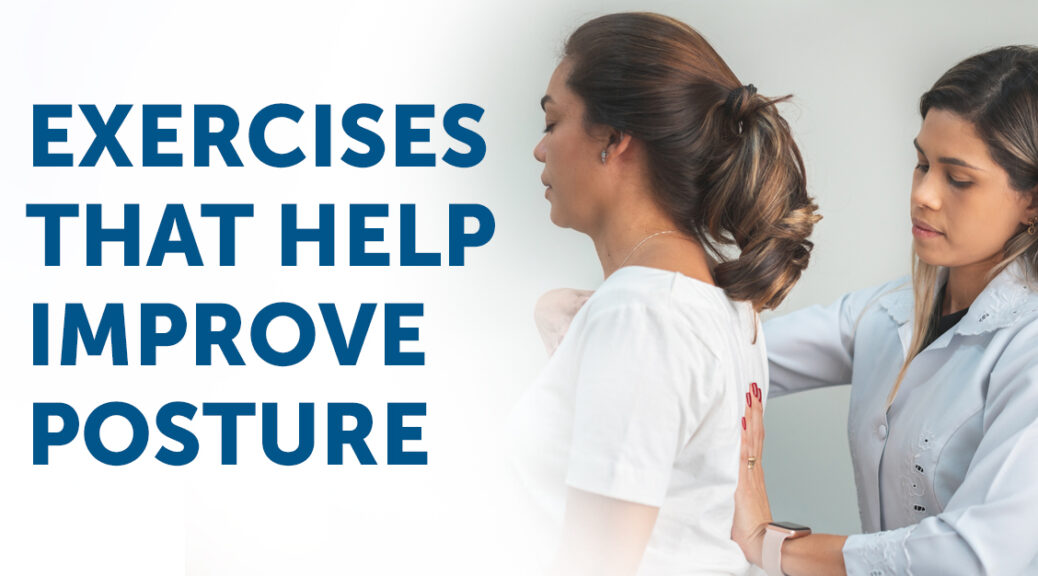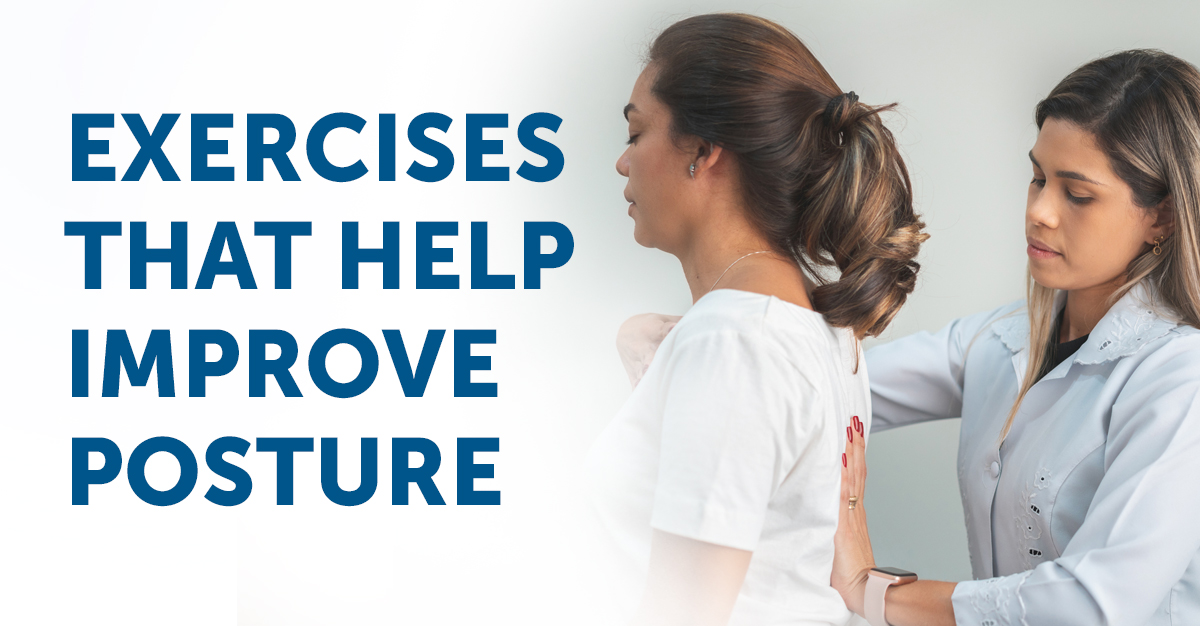How Do I know I need to Improve My Posture?
Great Question. Here’s a quick test you can do at home. If you have a full-length mirror, stand in front so your full-body profile is visible. If not, ask someone to snap a photo on your phone. Take a look. If you have good posture, you should be able to draw a straight line down from your ears to the floor that intersects your shoulders, hips, knees, and ankles. If the lines connecting your joints look more like a connect-the-dots, than a straight line, that’s a good indicator that posture is something you should work on.
Exercises that Help Improve Posture:
Being aware that you need to improve your posture is the first step. We recommend starting with a few general exercises (below). If you don’t see the results you’ve intended or are having trouble sticking with it, the next step would be to ask for help. Physical therapists can provide you with a guided rehabilitation plan to improve posture and reduce long-term symptoms.
3 Exercises Recommended by Physical Therapists, that Improve Posture:
1. Supine Neck Retraction:
Lie on your back with your head on a pillow and your knees bent with your feet flat on the floor. Bring your chin straight back down, gently pressing the back of your head down on the pillow, lengthening the back of your neck. Hold for a few seconds and then relax. There should be no pain felt while doing this exercise. Repeat several times to strengthen the muscles at the front of your neck.
2. Shoulder Retraction:
You can do this while sitting or standing. You’re going to ease your shoulder blades back, hold, and relax. The goal is to squeeze your shoulder blades together as far back as you comfortably can. Hold this position for a few seconds before releasing. There should be no pain felt while performing this exercise. Repeat several times to strengthen the muscles in your upper back, which can help pull your shoulders back and improve posture.
3. Standing Wall Posture:
While standing, bring your shoulders back against a wall with your hips, with your feet slightly away from the wall. Bring your next up against the wall as well. Gently hold your body in that position, feeling the muscles along your spine, squeezing back in as you maintain an upright posture. Hold for about 30 seconds, let it relax, and do another round. This exercise helps you become more aware of your posture and strengthens the muscles that support your spine.
Why is Good Posture Important?
Poor posture can significantly affect the body, leading to various health issues and discomfort. When the body is consistently slouching or hunched over, it puts a strain on our muscles and joints. This strain can lead to musculoskeletal imbalances, causing pain and discomfort in the neck, shoulders, back, and hips. Over time, poor posture can contribute to chronic conditions like headaches, back pain, and even digestive issues.
Before starting any exercise routine it’s important to consult with your healthcare provider. Some patients will have limitations regarding range of motion, strength, and ability. If you know you need help, consult a physical therapist or a qualified fitness professional who can assess your posture and create a personalized exercise plan tailored to your needs and goals.


